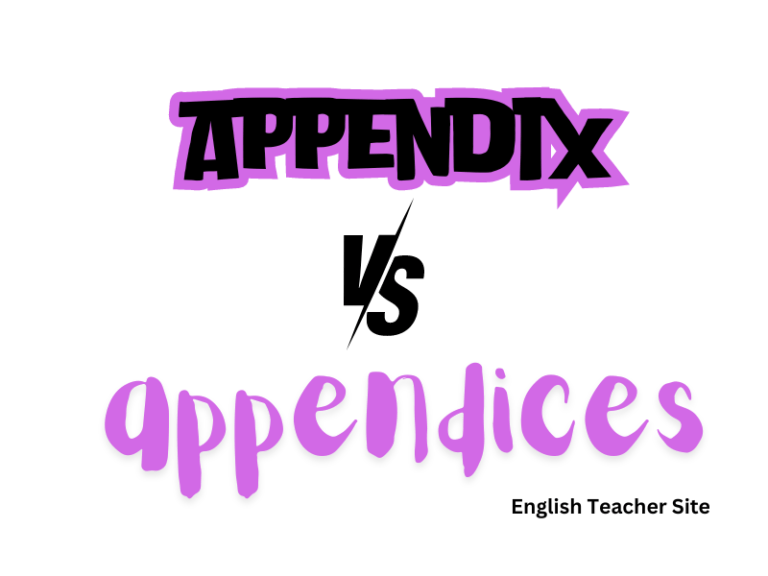Irregular Plural Nouns: Mastering English Language Exceptions

- Irregular plural nouns do not follow standard pluralization rules and often alter vowel sounds or word structure.
- Some irregular plurals remain unchanged in their plural form, while others may undergo complete transformation.
- Recognizing patterns among these various nouns is crucial for proper usage in both speech and writing.
The formation of irregular plurals can be categorized into various patterns. For instance, some nouns change a vowel sound to indicate plurality, like “man” becoming “men.” Others retain their singular form even in plural use, such as “sheep” or “deer.” Then there are words that completely overhaul their original form, like “child” to “children.” Mastery of these irregular forms is pivotal for grammatical accuracy and linguistic fluency. The intricacies of these nouns are a subject of continuous study for both native speakers and language learners alike.
Understanding Nouns
In the English language, nouns serve as the cornerstone of sentences, representing people, places, things, or ideas.
This section provides a focused look at both their singular and plural forms and the distinction between regular and irregular plurals in English grammar.
Singular and Plural Forms
A singular noun denotes one item, whereas a plural noun signifies more than one. Most nouns can be rendered plural by simply adding an “-s” or “-es” suffix.
Example Table of Singular and Plural Forms:
| Singular | Plural |
|---|---|
| cat | cats |
| bus | buses |
| wish | wishes |
These patterns are a fundamental aspect of English grammar, and understanding them is critical for proper communication.
Regular vs Irregular Plurals
While many nouns follow a predictable pattern to form plurals, there are numerous exceptions that do not adhere to the standard rules, known as irregular plurals.
Regular plurals form by adding an “-s” or “-es” to the singular form. In contrast, irregular plural nouns can undergo a variety of changes or sometimes remain the same as their singular form.
List of Patterns for Irregular Plurals:
- Nouns that change vowels (e.g., man to men)
- Nouns that remain unchanged (e.g., sheep to sheep)
- Nouns that add different suffixes or alter the word (e.g., child to children)
Comparison Table of Regular and Irregular Plurals:
| Regular Singular | Regular Plural | Irregular Singular | Irregular Plural |
|---|---|---|---|
| cup | cups | mouse | mice |
| car | cars | tooth | teeth |
| book | books | foot | feet |
Irregular Plural Nouns
Irregular plural nouns differ from regular nouns because they don’t simply require an -s or -es suffix to denote their plural form.
These forms often have to be memorized as they do not follow a standard rule of pluralization.
Examples of Irregular Plural Nouns
Many English words transform quite dramatically when they shift from singular to plural:
- A single child becomes children.
- Person changes to people.
- The word man is pluralized to men.
These are just a few instances where the usual rules do not apply.
Common Irregular Plurals
Certain patterns can be observed in the English language when it comes to irregular plural forms:
- The -f to -ves transition where a “leaf” turns into “leaves”.
- -o to -i or -en in cases such as “goose” to “geese”.
- Nouns that remain the same in both forms, for example, “deer” and “fish”.
This table lists some common irregular plural nouns along with their singular counterparts:
| Singular | Plural |
|---|---|
| woman | women |
| mouse | mice |
| tooth | teeth |
| foot | feet |
| life | lives |
| leaf | leaves |
Irregular Plurals from Latin and Greek
Words derived from Latin and Greek often have unique plural forms. They typically follow a pattern based on their origin:
- Latin words ending in -us often change to -i in plural, e.g., “focus” to “foci”.
- Greek derivatives ending in -ix or -ex usually switch to -ices, such as “matrix” to “matrices”.
Here’s a quick guide:
| Latin Singular | Latin Plural |
|---|---|
| alumnus | alumni |
| datum | data |
| Greek Singular | Greek Plural |
|---|---|
| appendix | appendices |
| index | indices |
Specific Cases in Irregular Plurals
Irregular plurals in English can be perplexing, as they don’t follow the standard rule of adding an -s or -es to form the plural. Instead, they mutate, retain forms from other languages, or change entirely. This section will explore various categories of these exceptions.
Zero Plural Nouns
Certain nouns have a zero plural, meaning the singular and plural forms are identical. Wildlife and aquatic species often fall under this category. Notable examples include:
- fish
- sheep
- deer
- moose
Foreign Origin Nouns
Many nouns of foreign origin maintain their original pluralization rules. Several languages contribute to this category, such as Latin and Greek. Consider these instances:
- cactus becomes cacti
- nucleus becomes nuclei
- basis becomes bases
- criterion becomes criteria
Mutating Vowel Nouns
The plural of some nouns is formed by altering the internal vowel sound of the singular form—often seen in older English words or those of Germanic origin. Key examples include:
- woman becomes women
- man becomes men
- tooth becomes teeth
- foot becomes feet
Nouns Ending in -F and -FE
When nouns end in -f or -fe, they often change to -ves in the plural. Common examples are:
- knife becomes knives
- life becomes lives
- wife becomes wives
- leaf becomes leaves
Nouns Ending in -O
A number of nouns ending in -o add either -s or -es in the plural form, and sometimes both forms are acceptable. Examples include:
- tomato becomes tomatoes
- potato becomes potatoes
- hero becomes heroes
- zero becomes zeros or zeroes
Other Irregularities
Besides the categories mentioned above, English contains a variety of other irregular plural nouns. These include changes in the word itself or complete word transformations. Examples are:
- child becomes children
- ox becomes oxen
- mouse becomes mice
- louse becomes lice
Table 1: Mutation in Plurals by Vowel Change
| Singular | Plural |
|---|---|
| man | men |
| woman | women |
| tooth | teeth |
| foot | feet |
Table 2: Nouns with Alternate Plurals
| Singular | Plural -s | Plural -es |
|---|---|---|
| zero | zeros | zeroes |
| buffalo | buffalos | buffaloes |
| torpedo | torpedos | torpedoes |
| veto | vetos | vetoes |
In summary, English language learners must memorize the specific cases of irregular plurals to master these exceptions. Whether through vowel mutation, retention of foreign plural forms, or complete change, each irregular noun tells a unique story of language evolution and influence.
Learning and Teaching Irregular Plurals
Teaching the concept of irregular plural nouns can be complex due to the lack of consistent rules in their formation. However, with targeted educational tools and resources, alongside effective practice and memorization techniques, learners can master these language quirks with confidence.
Educational Tools and Resources
For educators and students alike, having a robust set of tools and resources is crucial in navigating the realm of irregular plural nouns. These nouns deviate from standard pluralization rules, making traditional teaching methods less effective. Instead, resources such as interactive games, worksheets, and visual aids can significantly enhance the learning experience.
Interactive Games:
- Matching pairs games linking singular and irregular plural forms.
- Online quizzes to test recognition and usage of irregular plurals.
Worksheets and Handouts:
- Exercises converting singular nouns to their irregular plural form.
- Gap-fill activities for sentence-level practice.
Visual Aids:
- Charts that categorize irregular plurals by type.
- Pictorial representations that relate singular nouns to their irregular plurals.
Visual aids, like charts, play a particularly integral role in understanding patterns within irregular plurals. The following table illustrates some common patterns:
| Singular Noun | Irregular Plural Noun | Pattern Example |
|---|---|---|
| child | children | Irregular vowel change |
| mouse | mice | Vowel change + ‘-ice’ |
| foot | feet | Irregular vowel change |
| person | people | Completely different form |
Practice and Memorization Techniques
Consistent practice and memorization are the cornerstone techniques needed to master irregular plurals.
Memorization Strategies:
- Flashcards with singular on one side and plular on the opposite.
- Mnemonics to link singular and plural versions with visual imagery or acronyms.
Regular use of these nouns in both spoken and written English encourages natural retention. Moreover, practice in a variety of contexts helps reinforce learning, such as:
Practice Contexts:
- Daily journals using a new irregular plural noun each day.
- Creating stories that integrate a set list of irregular plurals.
- Role-playing exercises to use irregular plurals in real-life scenarios.
A focus on repetition also aids in memorization. Learners can benefit from revisiting the irregular plurals through spaced repetition, a learning technique that involves increasing intervals of time between subsequent reviews of the material learned. This can be structured into the learning process as follows:
| Day 1 | Introduce and review the list of irregular plurals |
|---|---|
| Day 3 | Quick review of the list with a small quiz |
| Day 7 | Apply irregular plurals in sentences or a dialogue |
| Day 14 | Assess understanding with a comprehensive test |
By breaking down the complex field of irregular plural nouns into manageable learning blocks, educators can build effective lesson plans. Particularly, the application of these tools and techniques in both classroom and home settings will aid English language learners in overcoming one of the quirks of English grammar.
Plurals of Latin and Greek words
Plural forms in English are generally straightforward, but Latin and Greek words follow unique patterns that diverge from regular rules. Latin and Greek words in English retain their original pluralization rules, which often involve changes in word endings.
Latin-derived plural nouns:
| Singular | Plural | Example Sentence |
|---|---|---|
| alumnus | alumni | All the alumni were invited to the reunion. |
| medium | media | The news was broadcast across various media. |
| bacterium | bacteria | Scientists studied the bacteria under a microscope. |
- For words ending in -us, the plural often changes to -i (e.g. fungus to fungi).
- When a Latin word ends with -um, it typically changes to -a in its plural form.
Greek-derived plural nouns:
| Singular | Plural | Example Sentence |
|---|---|---|
| phenomenon | phenomena | The auroras are beautiful natural phenomena. |
| thesis | theses | She read multiple theses to complete her research. |
| crisis | crises | The company had to manage multiple crises this year. |
- Greek words ending in -on change to -a (e.g., criterion to criteria).
- Certain words ending in -is change their plural to -es (e.g., thesis to theses).
Words of Greek origin can present idiosyncratic changes such as:
- The shift from -is to -es for words in crisis to crises.
- The unique plural of octopus to octopodes (although octopuses is also acceptable in English usage).
Irregular plural nouns from Latin and Greek origins are commonly encountered in academic, scientific, and literary texts.
Source
My name is Khamis Maiouf. I am the creator of the English Teacher Site, dedicated to providing valuable resources and insights for students around the world. With a passion for education and a commitment to helping students enhance their skills, I aim to make English teaching more effective and enjoyable for both educators and students.






